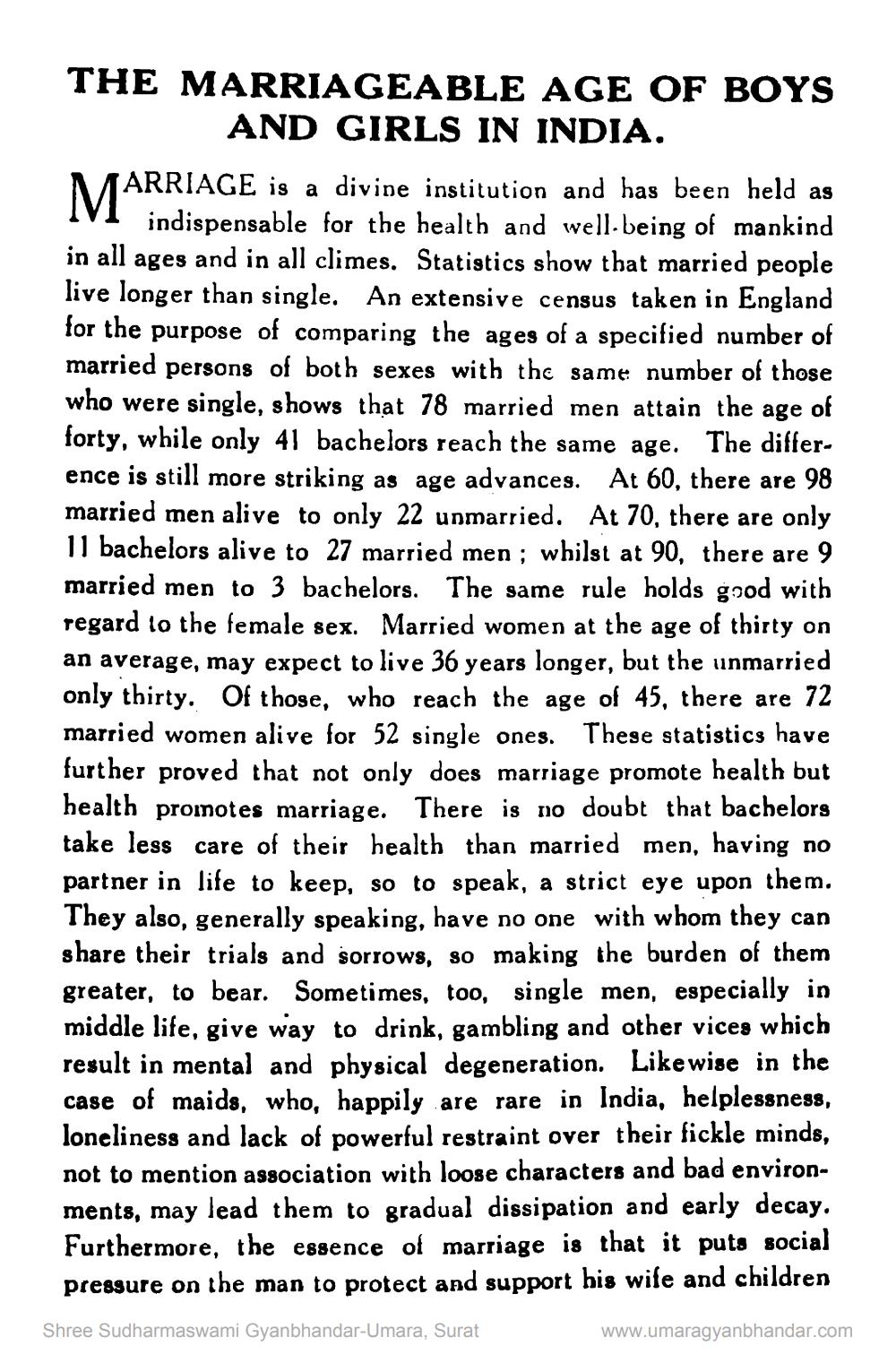________________
THE MARRIAGEABLE AGE OF BOYS AND GIRLS IN INDIA.
ΜΑ
ARRIAGE is a divine institution and has been held as indispensable for the health and well-being of mankind in all ages and in all climes. Statistics show that married people live longer than single. An extensive census taken in England for the purpose of comparing the ages of a specified number of married persons of both sexes with the same number of those who were single, shows that 78 married men attain the age of forty, while only 41 bachelors reach the same age. The difference is still more striking as age advances. At 60, there are 98 married men alive to only 22 unmarried. At 70, there are only 11 bachelors alive to 27 married men; whilst at 90, there are 9 married men to 3 bachelors. The same rule holds good with regard to the female sex. Married women at the age of thirty on an average, may expect to live 36 years longer, but the unmarried only thirty. Of those, who reach the age of 45, there are 72 married women alive for 52 single ones. These statistics have further proved that not only does marriage promote health but health promotes marriage. There is no doubt that bachelors take less care of their health than married men, having no partner in life to keep, so to speak, a strict eye upon them. They also, generally speaking, have no one with whom they can share their trials and sorrows, so making the burden of them greater, to bear. Sometimes, too, single men, especially in middle life, give way to drink, gambling and other vices which result in mental and physical degeneration. Likewise in the case of maids, who, happily are rare in India, helplessness, loneliness and lack of powerful restraint over their fickle minds, not to mention association with loose characters and bad environments, may lead them to gradual dissipation and early decay. Furthermore, the essence of marriage is that it puts social pressure on the man to protect and support his wife and children Shree Sudharmaswami Gyanbhandar-Umara, Surat
www.umaragyanbhandar.com




